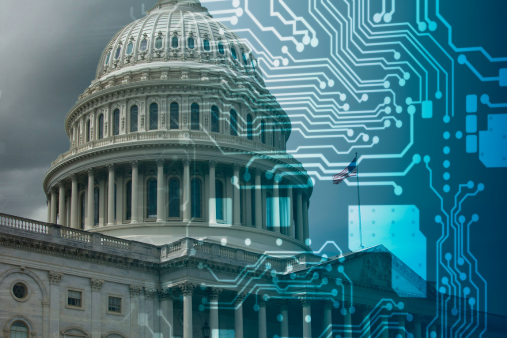In a de novo review of the claims under the Alice framework for determining patent subject matter eligibility in CardioNet, LLC v. Infobionic, Inc., the U.S. Court of Appeals for the Federal Circuit reversed a District Court’s determination that the claims were directed to an abstract idea.
Ultimately, the Federal Circuit agreed with CardioNet’s argument that the present decision is similar to the court’s holding in Visual Memory LLC v. NVIDIA Corp., where a “‘computer memory system’ that used ‘programmable operational characteristics’ of a computer’s cache memory based on the type of processor connected to the memory system” was determined to constitute patent eligible subject matter.
CardioNet’s U.S. Patent 7,941,207 is directed to “a device for detecting and reporting the presence of atrial fibrillation or atrial flutter in a patient.” By monitoring and processing a time-elapsed EKG, CardioNet’s claimed invention analyzes beat-to-beat variations to determine whether a patient is experiencing atrial variations and to alert staff.
An accused infringer, InfoBionic, argued at the district court level that the claims are invalid as being directed to unpatentable subject matter. The District Court agreed with the defendant concluding that “the claims are directed to the abstract idea that atrial fibrillation and atrial flutter ‘can be distinguished by focusing on the variability of the irregular heartbeat,’” rejecting CardioNet’s argument that “the claimed invention ‘represents an improvement to the function of cardiac monitoring devices,’ including ‘more accurate and clinically significant’ detection of atrial fibrillation and atrial flutter.”
Upon review, the Federal Circuit overruled the District Court, reasoning that the claims are directed to eligible subject matter under step one of the Alice two-step analysis framework. Specifically, it determined that the claims “focus on a specific means or method that improves the relevant technology,” but are not “directed to a result or effect that itself is the abstract idea and merely invoke generic processes and machinery.”
In support of this determination, the court pointed to the benefits offered by the patented device over other solutions, as laid out in the detailed description, in that “the device more accurately detects the occurrence of atrial fibrillation and atrial flutter – as distinct from V-TACH [ventricular tachycardia] and other arrhythmias – and allows for more reliable and immediate treatment of these two medical conditions.” It cited the device’s stated “increased clinical significance” in delivering fewer false positive or false negative indications.
In reversing, the Federal Circuit pointed to the lower court’s flawed determination that “the claims are directed to automating known techniques” as being “at the heart of” its error. Reasoning that neither the written description, nor the record as a whole, supported the assertion that “doctors performed the same techniques as the claimed device in diagnosing atrial fibrillation or atrial flutter.” Moreover, the court found it “difficult to fathom,” for example, “how doctors mentally or manually used ‘logic to identify the relevance of the variability [in the beat-to-beat timing] using a non-linear function of a beat-to-beat interval,’” as required by one of the claims at issue.
Separately, the court underlined the importance of considering the recited advantages of a given device by pointing out that the district court erred in dismissing the numerous proffered advantages of the patented device. “Here, there is no record evidence,” the Federal Circuit reasoned, “undermining the statements in the written description concerning the benefits of the claimed device.”
As a final matter, the court cautioned against “analogizing the ’207 patent claims to certain ineligible ‘computer-implemented claims for collecting and analyzing data to find specific events,’” as the district court did. The Federal Circuit highlighted that “[g]eneralizing the asserted claims as being directed to collecting, analyzing, and reporting data is inconsistent with our instruction that courts ‘be careful to avoid oversimplifying the claims’ by looking at them generally and failing to account for the specific requirements of the claims.”
For more information, contact the Barnes & Thornburg attorney with whom you work or Irina Sullivan at 312-214-8331 or isullivan@btlaw.com; or Scott Simmonds at 317-231-7403 or ssimmonds@btlaw.com.
© 2020 Barnes & Thornburg LLP. All Rights Reserved. This page, and all information on it, is proprietary and the property of Barnes & Thornburg LLP. It may not be reproduced, in any form, without the express written consent of Barnes & Thornburg LLP.
This Barnes & Thornburg LLP publication should not be construed as legal advice or legal opinion on any specific facts or circumstances. The contents are intended for general informational purposes only, and you are urged to consult your own lawyer on any specific legal questions you may have concerning your situation.











/Passle/6488d4630e7e25c9ac9f834a/SearchServiceImages/2024-11-14-13-11-27-495-6735f6fff42d6cc59c8ec5c1.jpg)
/Passle/6488d4630e7e25c9ac9f834a/SearchServiceImages/2024-11-11-22-02-38-042-67327efe31216b909e6ea644.jpg)
